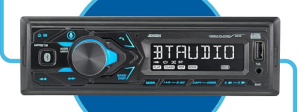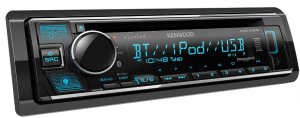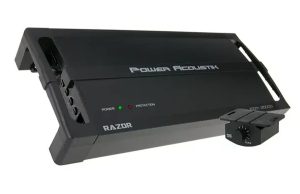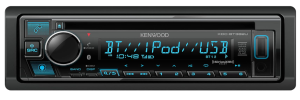Craving a heart-pounding audio experience while cruising down the highway? The Audiopipe APMI-2000 amplifier delivers the power and clarity to transform your car’s sound system into a concert hall on wheels. This compact, budget-friendly monoblock amplifier packs a serious punch, making it a top choice for car audio enthusiasts who demand booming bass and crisp audio without breaking the bank. In this guide, we’ll dive into why the APMI-2000 stands out, how it elevates your car’s audio, and the steps to install and optimize it for maximum performance.
Contents
- Why Choose the Audiopipe APMI-2000?
- How the APMI-2000 Elevates Your Car Audio
- Installing the Audiopipe APMI-2000: A Step-by-Step Guide
- Optimizing the APMI-2000 for Your Music Preferences
- Why the APMI-2000 Is a Budget-Friendly Powerhouse
- Pairing the APMI-2000 with the Right Subwoofers
- Maintenance Tips for Long-Lasting Performance
- Is the Audiopipe APMI-2000 Right for You?
- Where to Buy the APMI-2000
- Final Thoughts
Why Choose the Audiopipe APMI-2000?
The Audiopipe APMI-2000 isn’t just another car amplifier—it’s a game-changer for anyone serious about in-car audio. Designed with power and affordability in mind, this Class-D monoblock amp delivers up to 2000 watts RMS at 1 ohm, perfect for driving those monstrous 12-inch or 15-inch subwoofers. Its compact size, measuring just 16.4 x 6.5 x 2.2 inches, fits easily under seats or in tight trunk spaces, offering flexibility for any vehicle setup.
What sets this amp apart? Its efficiency and durability. The Class-D technology ensures minimal heat generation, keeping the amp cool even during long drives. Plus, it boasts a 4-way protection circuit—covering low voltage, short circuits, overloads, and thermal issues—so your investment stays safe. For bass lovers, the included remote bass knob lets you tweak low-end output from the driver’s seat, giving you total control over your sound.
The APMI-2000 also shines in its versatility. It’s 1-ohm stable, meaning it can handle demanding subwoofer configurations, and you can bridge it for extra power when needed. Whether you’re blasting hip-hop, EDM, or rock, this amp ensures your music hits hard and stays clean.
Key Features of the APMI-2000
- Power Output: 900W RMS at 4 ohms, 1400W at 2 ohms, 2000W at 1 ohm.
- Compact Design: Fits in tight spaces without sacrificing performance.
- Remote Bass Control: Adjust bass levels on the fly.
- 4-Way Protection: Guards against low voltage, shorts, overloads, and overheating.
- Class-D Efficiency: Runs cool and conserves battery power.
- Bridgeable: Combine channels for maximum output.
How the APMI-2000 Elevates Your Car Audio
A car’s factory audio system often falls short, delivering flat sound that lacks depth. The APMI-2000 changes that by amplifying weak audio signals and driving your subwoofers with precision. Here’s how it transforms your listening experience:
1. Thumping Bass That Rattles the Trunk
Subwoofers crave power to produce deep, resonant bass. The APMI-2000’s 2000W RMS output ensures your subs perform at their peak, delivering low frequencies that you feel in your chest. Whether it’s the booming kick of a hip-hop track or the pulsating rhythm of electronic music, this amp brings every beat to life.
2. Crystal-Clear Sound Quality
Unlike cheap amps that distort at high volumes, the APMI-2000 maintains clarity. Its adjustable low-pass filter and subsonic filter eliminate unwanted frequencies, ensuring only the cleanest bass reaches your speakers. This results in a balanced soundstage where mids and highs from your door speakers blend seamlessly with the lows.
3. Customizable Audio Experience
The remote bass knob and onboard controls let you fine-tune your sound. Crank up the bass for a party vibe or dial it back for a relaxed drive. The amp’s crossover settings allow you to direct specific frequencies to your subwoofers, optimizing performance for any music genre.
4. Durability for Long-Term Use
Built with MOSFET transistors and robust circuitry, the APMI-2000 withstands the rigors of daily use. Its thermal protection keeps it from overheating, while short-circuit safeguards prevent damage from wiring mishaps. This amp is designed to last, giving you years of high-quality audio.
Installing the Audiopipe APMI-2000: A Step-by-Step Guide
Ready to upgrade your car’s sound? Installing the APMI-2000 is straightforward if you follow these steps. Always prioritize safety and consult a professional if you’re unsure.
Tools You’ll Need
- Screwdriver set
- Wire cutters/strippers
- Multimeter
- Wiring kit (power, ground, RCA, and remote wires)
- Test tones or bass-heavy tracks
- Socket wrench (for battery connections)
Step 1: Prepare Your Vehicle
Park your car on a flat surface and turn off the ignition. Disconnect the negative battery terminal to avoid electrical shorts. Clear space in your trunk or under a seat for the amp, ensuring proper ventilation to prevent overheating.
Step 2: Run the Power and Ground Wires
Connect a power cable from the positive battery terminal to the amp’s power input, using a fuse holder near the battery for safety. Route the cable through the firewall and secure it away from moving parts. For the ground, attach a short, thick wire from the amp’s ground terminal to a clean, unpainted metal surface on the car’s chassis.
Step 3: Connect RCA and Remote Wires
Run RCA cables from your head unit’s preamp outputs to the amp’s RCA inputs. These carry the audio signal. Next, connect the remote turn-on wire from the head unit to the amp’s remote terminal. This tells the amp to power on when the stereo starts.
Step 4: Hook Up the Subwoofers
Wire your subwoofers to the amp’s speaker outputs, ensuring the impedance matches your setup (e.g., 1 ohm for maximum power). Double-check polarity to avoid phase cancellation, which can weaken bass output.
Step 5: Secure the Amplifier
Mount the APMI-2000 in place using the provided brackets or screws. Ensure it’s stable and won’t shift while driving. Keep it away from moisture or excessive heat sources.
Step 6: Test and Tune
Reconnect the battery and power on your head unit. Play a test tone or bass-heavy track at 75% volume. Use a multimeter to measure the amp’s output voltage at the speaker terminals. Adjust the gain knob slowly until you reach the desired voltage without distortion (refer to the amp’s manual for target values). Fine-tune the low-pass and subsonic filters to optimize bass clarity.
Safety Tips
- Always disconnect the battery before wiring.
- Use high-quality cables to prevent signal loss.
- Check connections for tightness to avoid shorts.
- If you hear distortion, lower the gain immediately.
Optimizing the APMI-2000 for Your Music Preferences
The APMI-2000’s versatility shines when you tailor its settings to your favorite genres. Here’s how to dial in the perfect sound:
For Bass-Heavy Genres (Hip-Hop, EDM)
Set the low-pass filter to 80-100 Hz to focus on deep lows. Use the remote bass knob to boost low-end output, but avoid maxing it out to prevent distortion. A slight bass boost (2-4 dB) enhances punch without overpowering mids and highs.
For Rock or Metal
Rock tracks need tight, controlled bass. Set the low-pass filter to 60-80 Hz and keep the subsonic filter around 20-25 Hz to eliminate inaudible frequencies. This ensures the kick drum and bass guitar stay crisp without muddying the vocals.
For Classical or Jazz
These genres demand balance. Lower the bass boost to maintain clarity across all frequencies. Set the low-pass filter to 50-70 Hz to let the subwoofer complement the mids and highs, creating a rich, orchestral sound.
Troubleshooting Common Issues
- No Sound: Check power, ground, and remote wire connections. Ensure the head unit’s RCA outputs are active.
- Distortion: Lower the gain or adjust the crossover settings. Verify subwoofer impedance matches the amp’s capabilities.
- Overheating: Ensure proper ventilation and reduce gain if the amp runs hot.
- Hiss or Noise: Use shielded RCA cables and ground the amp properly to eliminate interference.
Why the APMI-2000 Is a Budget-Friendly Powerhouse
Priced around $170-$200, the APMI-2000 offers unmatched value. Many high-end amps cost double or triple but don’t deliver significantly better performance for casual listeners. User reviews on forums like CarAudio.com praise its durability, with some calling it a “tank” for surviving low voltage and heavy use. Others highlight its accurate power ratings, a rarity in budget amps.
Compared to competitors like the Skar Audio RP-2000.1D or Taramps HD 3000, the APMI-2000 holds its own. It matches their power output while being more compact and affordable. Its mini chassis doesn’t skimp on features, making it ideal for beginners and seasoned audiophiles alike.
Pros
- Affordable price for 2000W RMS output.
- Compact and easy to install.
- Robust protection circuitry.
- Remote bass control for on-the-go adjustments.
- Handles low-impedance loads with ease.
Cons
- May require a high-output alternator for .5-ohm setups.
- Some users report inconsistent power at max volume (wiring quality matters).
- Not ideal for full-range speakers due to monoblock design.
Pairing the APMI-2000 with the Right Subwoofers
To unleash the APMI-2000’s full potential, pair it with subwoofers that can handle its power. Here are top picks:
- Pioneer TS-W3003D4: A 12-inch sub with 2000W peak power and dual 4-ohm voice coils. Perfect for a 2-ohm or 1-ohm setup.
- Skar Audio VXF-15: A 15-inch beast with 3000W peak power, ideal for bass heads craving earth-shaking lows.
- CT Sounds Meso-12: A 12-inch sub with 1400W RMS, offering tight, accurate bass for smaller enclosures.
Match the sub’s RMS rating to the amp’s output (1000-2000W) and ensure proper enclosure design (ported or sealed) to maximize sound quality. A quality wiring kit and sound-deadening mats further enhance performance by reducing noise and ensuring clean power delivery.
Maintenance Tips for Long-Lasting Performance
Keep your APMI-2000 in top shape with these tips:
- Check Connections Regularly: Loose wires cause noise or power loss.
- Clean the Amp: Dust buildup can lead to overheating. Use compressed air to clean vents.
- Monitor Battery Health: A weak battery strains the amp. Upgrade to an AGM battery for heavy bass setups.
- Avoid Overdriving: Running the amp at max gain constantly reduces lifespan.
- Inspect Fuses: Replace blown fuses with the correct rating to prevent damage.
Is the Audiopipe APMI-2000 Right for You?
The Audiopipe APMI-2000 is a stellar choice if you want powerful, budget-friendly bass without compromising quality. It’s perfect for:
- Bass enthusiasts who love hip-hop, EDM, or rap.
- Drivers upgrading from weak factory audio systems.
- Budget-conscious audiophiles seeking high performance.
- Car audio competitors needing reliable power for subwoofers.
However, if you prioritize full-range audio for mids and highs, consider a multi-channel amp instead. Also, extreme setups (e.g., .5-ohm loads) may demand a beefier electrical system, like a 300A alternator, to avoid voltage drops.
Where to Buy the APMI-2000
You can find the Audiopipe APMI-2000 at retailers like Sonic Electronix, eBay, or Amazon. Prices typically range from $170 to $200, with occasional discounts during sales. Always buy from reputable sellers to avoid counterfeits, and check for warranty options for added peace of mind.
Final Thoughts
The Audiopipe APMI-2000 amplifier unlocks a world of immersive, high-fidelity sound for your car. Its blend of power, affordability, and compact design makes it a standout in the crowded car audio market. By following our installation and tuning tips, you’ll enjoy thumping bass, clear audio, and a driving experience that feels like a live concert. Ready to take your car’s sound to the next level? Grab the APMI-2000 and let your music roar.
Explore premium in-car audio with Auto Stereo Guide. Find reviews, installation tips, and top-rated systems for a superior sound experience on the road!






